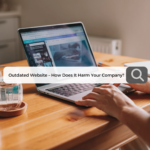Why a Website Outline is Needed and How to Create One

Creating a website outline is essential to ensure that the site meets client needs, is well-organized, and provides an excellent user experience. Here’s why an outline is needed and how clients can create one in collaboration with web designers and developers, using key UX principles from Laws of UX.
Why a Website Outline is Needed
- Organize Content: An outline ensures that all necessary information is included and logically arranged.
- Define Structure: It provides a clear structure for the website, making it easier to navigate and use.
- Identify Key Elements: It helps identify the essential components of each page, ensuring nothing important is overlooked.
- Streamline Development: With a well-defined outline, the development process becomes more efficient, reducing the chances of costly revisions.
- Enhance User Experience: A well-structured website improves user experience, making it easier for visitors to find the information they need.
How to Create a Perfect Website Outline in Collaboration with Web Designers and Developers
- Define Your Goals (Goal-Gradient Effect):
- Client: Clearly define the primary goals of your website. What do you want to achieve? Sales, information dissemination, brand awareness?
- Designer/Developer: Understand and translate these goals into the website’s design and functionality. Use progress indicators to keep users engaged.
2. Identify Your Audience (Jakob’s Law):
- Client: Know your target audience and their preferences. What are their expectations?
- Designer/Developer: Ensure that the design and navigation are familiar to the audience. Follow industry standards and common practices.
3. Research Competitors (Fitts’s Law):
- Client: Analyze competitor websites to understand what works well and what doesn’t.
- Designer/Developer: Ensure that key elements are easy to interact with, minimizing the time and effort required by users. Implement best practices from competitors.
4. List Key Pages (Hick’s Law):
- Client: Identify the main pages you need, such as Home, About Us, Services, Products, Blog, and Contact Us.
- Designer/Developer: Simplify choices and create clear, concise navigation to reduce cognitive load on users.
5. Detail Subpages (Pareto Principle):
- Client: For each main page, list any subpages or sections. Focus on the content that will drive the most user interaction.
- Designer/Developer: Highlight the 20% of content that will have the biggest impact on user engagement and interactions.
6. Create a Sitemap (Mental Models):
- Client: Collaborate to draw a visual representation of your website’s structure, showing the relationships between pages.
- Designer/Developer: Align this structure with users’ mental models to make navigation intuitive and user-friendly.
7. Outline Content for Each Page (Serial Position Effect):
- Client: Determine what content will go on each page, including text, images, videos, and other media.
- Designer/Developer: Ensure that key information is placed at the beginning and end to leverage primacy and recency effects.
8. Plan Navigation (Law of Common Region):
- Client: Decide how users will navigate your website. Include main navigation menus, footer menus, and any internal linking strategies.
- Designer/Developer: Design navigation so that related items are grouped together, making it easier for users to understand and use.
9.Design Mockups (Von Restorff Effect):
- Client: Work with designers to create rough sketches or wireframes of each page.
- Designer/Developer: Highlight unique or important elements to make them stand out and grab user attention.
10. Review and Refine (Aesthetic-Usability Effect):
- Client: Review the outline with your team and stakeholders, ensuring the design meets your goals and expectations.
- Designer/Developer: Ensure the design is both aesthetically pleasing and easy to use. Make necessary adjustments based on feedback before starting development.
Why Choose This Collaborative Approach
- Ensures Alignment with Business Goals:
- Client Perspective: Clients have the best understanding of their business goals, target audience, and market position. Their input ensures that the website aligns with strategic objectives.
- Designer/Developer Perspective: Designers and developers translate these goals into practical and aesthetically pleasing designs that function seamlessly.
- Client Expertise: Clients know their brand, products, and customers, providing valuable insights.
- Designer/Developer Expertise: Designers bring creativity and user experience knowledge, while developers offer technical expertise to build a functional and reliable site.
- Early and Regular Collaboration: By working together from the beginning and maintaining open communication, all parties understand the project’s scope, requirements, and expectations.
- Reduces Misunderstandings: Continuous feedback loops help clarify requirements and address issues promptly, reducing the risk of miscommunication.
- Efficient Workflow: A clear and detailed outline provides a roadmap for the project, making the development process more efficient and reducing the chances of costly revisions.
- Time Management: Clear timelines and milestones help ensure that the project stays on schedule.
- User-Centered Design: Incorporating UX principles from the start ensures that the website is designed with the end-user in mind, leading to better engagement and satisfaction.
- Intuitive Navigation: A well-thought-out structure makes it easy for users to find information and navigate the site.
- Logical Structure: A detailed outline ensures that all content is organized logically, making it easier for users to find what they need.
- Prioritizes Key Information: Important information is highlighted, improving the overall effectiveness of the website.
- Future-Proofing: A strong foundation allows for easier updates and additions, ensuring that the website can grow and evolve with the business.
- Flexibility: The website can be easily adapted to changing business needs and user expectations.
- Reduces Rework: Thorough planning and early problem-solving reduce the need for costly revisions later in the project.
- Budget Management: Clear understanding of project scope and requirements helps in better budget management and allocation of resources.
- Client Satisfaction: Clients feel more involved and confident that their needs are being met, leading to higher satisfaction.
- User Satisfaction: A user-friendly and well-designed website leads to better user experiences, increasing overall satisfaction and engagement.
- Ongoing Collaboration: Regular feedback and collaboration foster an environment of continuous improvement, ensuring the website remains effective and relevant.

If you’re searching for dependable web design and development services, consider partnering with Eunoia Twenty One. Their diverse range of offerings can greatly bolster your online presence. With their expertise, you can effectively achieve your website goals. Let’s collaborate and turn your visions into reality!




